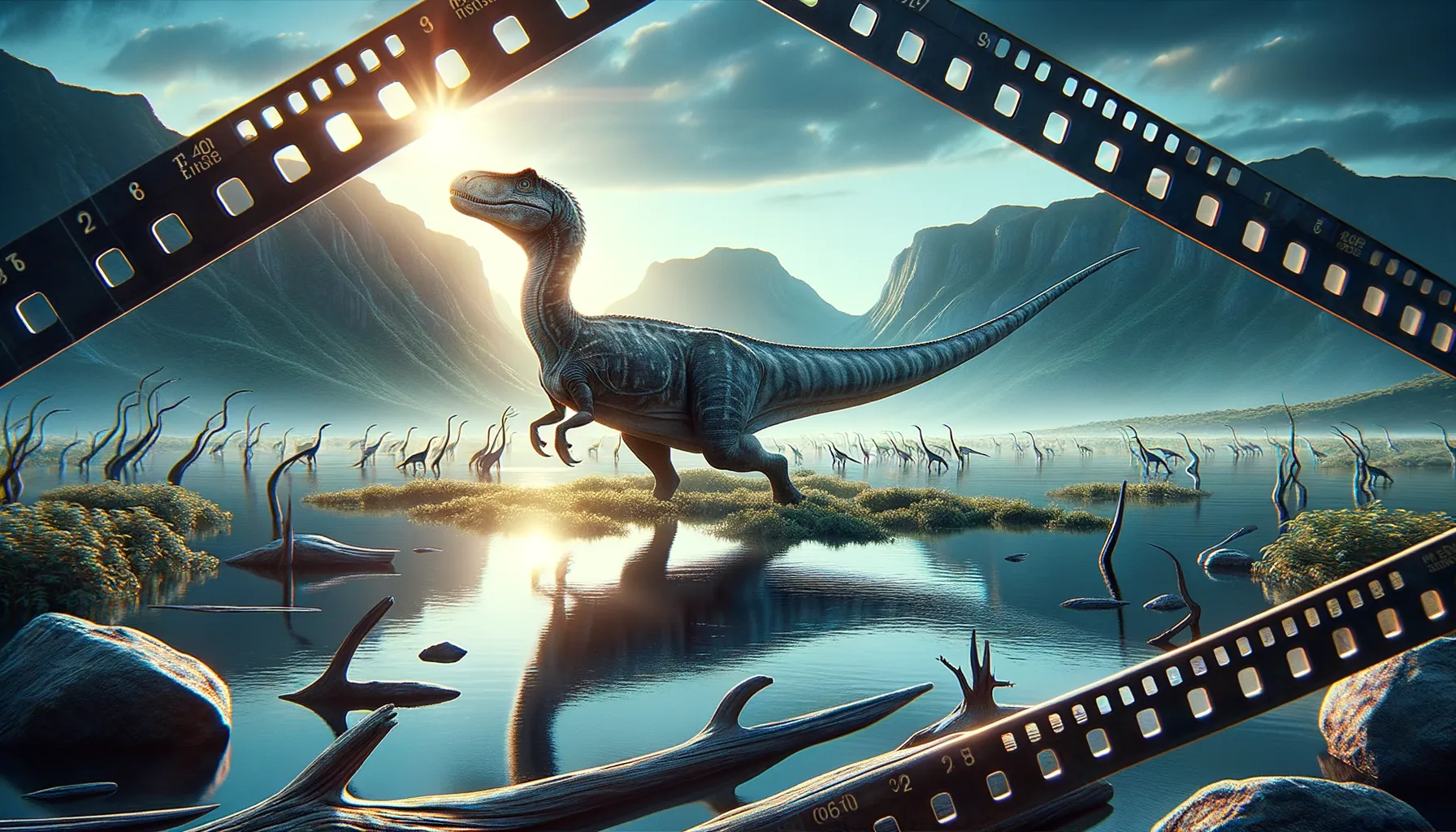
Claosaurus
A gentle grazer of ancient landscapes.
Period
triassic
Length
Around 7.5 meters.
Height
About 1.8 meters at the hip.
Weight
Approximately 1,000 kilograms.
Claosaurus was a graceful herbivore that roamed the Earth during the Late Cretaceous period. Often regarded as an interesting link between its ancestors and more advanced hadrosaurs, this dinosaur is known through fossils that provide insight into its existence millions of years ago. Its adaptations for walking on both two and four legs highlight a versatile lifestyle, suitable for a herbivorous diet.
Diet
Claosaurus was a herbivore, feeding primarily on a variety of ferns, conifers, and other prehistoric plants. Its beak and specialized teeth were well adapted for grinding plant material, helping it extract enough energy to sustain its large size.
Hunting
As a herbivore, Claosaurus didn't engage in hunting. Its primary behavior involved foraging for plants, moving through its environment in constant search of food to consume. It likely used its speed to escape predators rather than chase prey.
Environmental challenges
Claosaurus lived during a time when Earth's climate was warm, providing lush vegetation but also creating competition for resources among herbivores. It had to constantly be vigilant against predators such as large theropods. Climate fluctuations may have posed challenges, demanding adaptations in foraging and migration patterns. The rise of flowering plants during its time could have gradually altered its dietary habits.
Speed
Moderate, suitable for quick bursts.
Lifespan
Estimated to be around 20 to 30 years.
First discovery
First discovered in the 19th century in Kansas, USA.
Fun Facts
- Claosaurus was a dinosaur that lived during the Late Cretaceous period, around 80 million years ago.
- This dinosaur was a herbivore, which means it ate plants and roamed the ancient lands of North America.
- Claosaurus was about the size of a modern-day cow, growing up to 15 feet long.
- It is classified as a hadrosaur, which is a group of dinosaurs often referred to as 'duck-billed' due to the shape of their snouts.
- Unlike many of its duck-billed relatives, Claosaurus had a relatively streamlined body and could likely move quickly.
- The name 'Claosaurus' means 'broken lizard', which refers to the fragmented fossil evidence found when it was first discovered in the 1870s.
- Claosaurus is one of the earliest known hadrosaurs, providing important insights into the evolution of this group.
Growth and Development
Claosaurus likely hatched from eggs, starting life relatively small and growing rapidly. Juveniles may have had different colorations or patterns for camouflage. Growth rings in fossils suggest a period of fast growth in early years, followed by a plateau as they matured. Studying its bone structure also gives insights into how it sustained its large body through different life stages.
Habitat
Claosaurus inhabited regions that were likely dense with trees and shrubs, offering plenty of food and shelter. The environment would have been diverse, with river systems that supported a rich variety of life. Such habitats provided not just food but also protection from predators. During its time, North America was different from today, with inland seas creating unique ecosystems.
Interaction with other species
As a herbivore, Claosaurus would have often shared its habitat with other plant-eating dinosaurs, potentially leading to competition over food sources. It may have formed herds for protection against predators. Predatory encounters with theropods were a constant threat, shaping its behavior and possibly social structure. It also likely coexisted with smaller species, playing a role in the ecosystem's balance.
Natural lifespan
Claosaurus could live up to 20 or 30 years, depending on environmental conditions and predation.
Reproduction
Claosaurus likely reproduced by laying eggs in nests, similar to other dinosaurs of its time. Parental care may have been present, with adults protecting nests until hatching. Fossilized nests in related species suggest group nesting behavior. The reproductive cycle would have been closely tied to environmental conditions to maximize offspring survival.
Social behaviour
Claosaurus might have traveled in groups or herds, providing protection against predators. Social structures could have aided in foraging, raising young, and migrating between feeding areas. Communication may have involved vocalizations and visual signals. Such behavior would have fostered group dynamics essential for survival in its ecosystem.
Fossil locations
Fossil remains of Claosaurus have been primarily found in the state of Kansas, USA. Discoveries were significant in the late 19th century, contributing to early paleontological research. Since then, additional specimens have helped clarify its classification and relationship to other ornithopods. These fossils aid in understanding the dinosaur's distribution and lifestyle during the Late Cretaceous.
